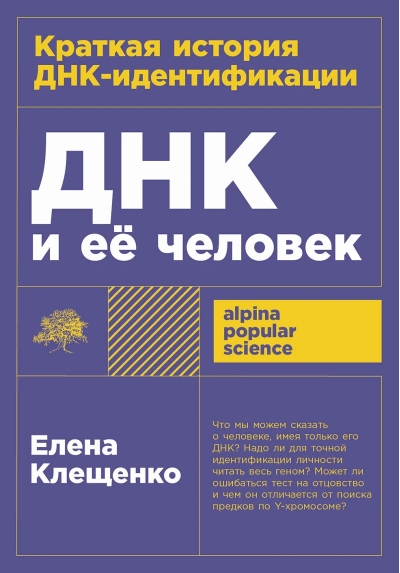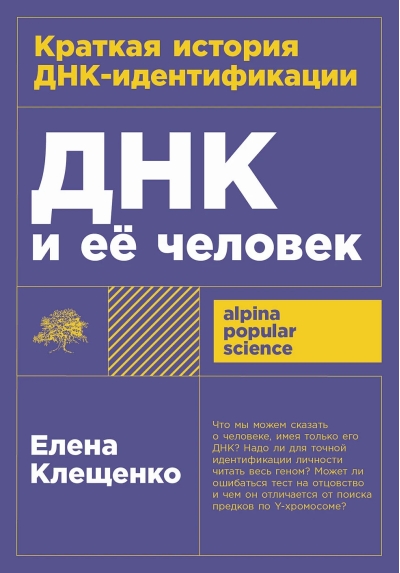DNA and its man. A brief history of DNA identification
6.99 €
Out of stock
Elena Kleshchenko's book is addressed to all those who are interested in the practical application of the achievements of genetics in such fields as forensics, genealogy, history. It is about the possibility of identifying a person by his genetic material.
The author tells about the methods of DNA research and about those who stood at their origins: Sir Alec Jeffreys, who invented DNA-dactyloscopy; eccentric Cary Mullis, who managed to multiply a single DNA molecule to appreciable quantities, and other heroes of "scientific detectives". The detective line continues with the story of the search for criminals using DNA analysis - from Jack the Ripper to modern maniacs and terrorists. No less fascinating historical investigations: who was Rurik - Slavic or Scandinavian, whether a lot of descendants left Genghis Khan, whether the Duke of Monmouth was the son of the King of England. Why are experts confident in the accuracy of the identification of the remains of Nicholas II and his family (and why do non-specialists doubt)? In conclusion, the reader will learn why it is impossible to invent a biological weapon against a certain ethnic group, whether it is possible to reconstruct the appearance of DNA and whether it is dangerous to put your genome on the Internet.
The author tells about the methods of DNA research and about those who stood at their origins: Sir Alec Jeffreys, who invented DNA-dactyloscopy; eccentric Cary Mullis, who managed to multiply a single DNA molecule to appreciable quantities, and other heroes of "scientific detectives". The detective line continues with the story of the search for criminals using DNA analysis - from Jack the Ripper to modern maniacs and terrorists. No less fascinating historical investigations: who was Rurik - Slavic or Scandinavian, whether a lot of descendants left Genghis Khan, whether the Duke of Monmouth was the son of the King of England. Why are experts confident in the accuracy of the identification of the remains of Nicholas II and his family (and why do non-specialists doubt)? In conclusion, the reader will learn why it is impossible to invent a biological weapon against a certain ethnic group, whether it is possible to reconstruct the appearance of DNA and whether it is dangerous to put your genome on the Internet.
See also:
- All books by the publisher
- All books by the author
- All books in the series Alpina Popular Science















